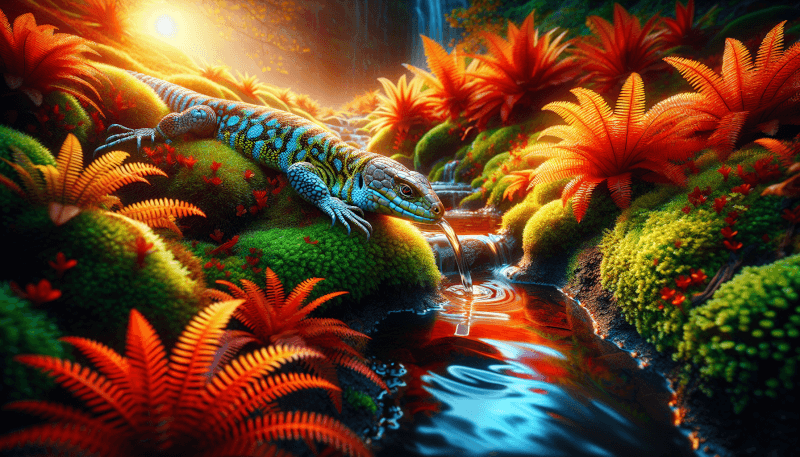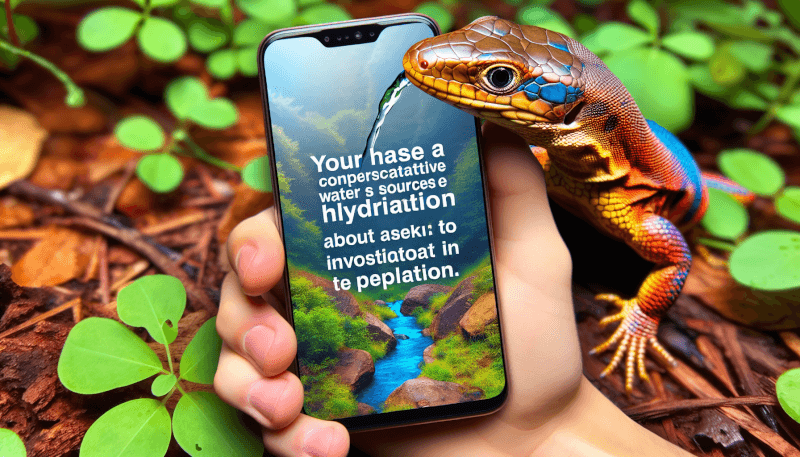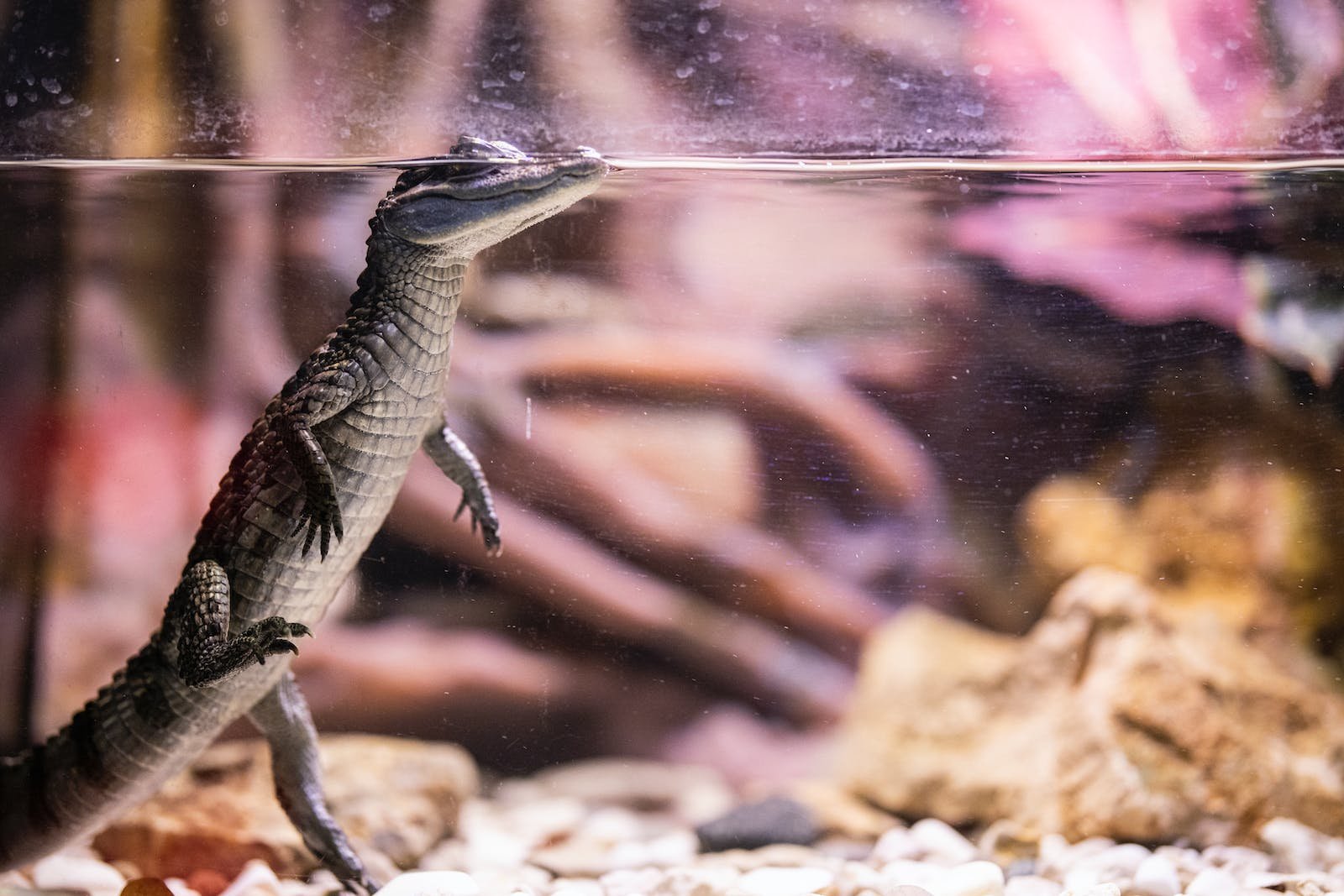In this informative guide, you will discover everything you need to know about reptile water sources and hydration. From the importance of providing a proper water source to understanding the different types of water reptiles need, this article will delve into the fascinating world of reptile hydration. Whether you’re a beginner reptile owner or a seasoned expert, this complete guide will provide valuable insights on how to ensure your scaly friends stay hydrated and healthy. So grab a comfy spot and get ready to explore the world of reptile water sources and hydration!
Water Sources for Reptiles
Reptiles, just like any other living beings, require access to water in order to survive and thrive. Water is essential for reptiles to maintain proper hydration, support bodily functions, and regulate their body temperature. As a reptile owner, it is crucial to understand the importance of providing suitable water sources for your scaly friends. In this comprehensive guide, we will explore the different types of water sources available for reptiles, how to choose the right water source for your specific species, ways to create a natural habitat that replicates their natural water sources, and how to maintain water quality for the health and well-being of your reptilian companions.
Importance of Water Sources
Water sources play a vital role in the health and well-being of reptiles. They not only provide hydration but also serve as important aspects of their natural habitat. Reptiles obtain water in various ways, such as drinking, soaking, and absorbing moisture from their environment. Water is essential for proper digestion, shedding, thermoregulation, and overall hydration. Insufficient access to water can lead to dehydration, which can have serious health consequences for reptiles. Therefore, it is essential to ensure that your reptile has access to a clean and appropriate water source at all times.
Types of Reptile Water Sources
When it comes to providing water for your reptile, there are two main types of water sources: natural and artificial. Natural water sources are designed to mimic the water sources found in reptiles’ natural habitats, while artificial water sources are man-made alternatives that provide hydration and mimic natural behaviors. Both types have their own advantages and considerations, depending on the specific needs of your reptile species.
Natural Water Sources
Natural water sources aim to replicate the water sources that reptiles would encounter in their native environments. These sources may include areas such as rivers, ponds, lakes, and rain pools. They can be created within the enclosure or provided outside of it through supervised trips. Natural water sources are beneficial as they encourage natural behaviors, such as swimming and soaking. However, it is important to ensure proper maintenance and cleanliness to prevent the growth of bacteria or parasites.
Artificial Water Sources
Artificial water sources are man-made options that can be introduced into the reptile’s enclosure. These sources include water bowls and dishes, aquariums or enclosures with water features, hydration pads, gel cubes, drip systems, and autodrinkers. Artificial water sources provide a controlled environment for the reptile to access water conveniently without the risk of introducing outside contaminants or harmful organisms. They are particularly suitable for reptiles that do not require large bodies of water or have specific temperature and humidity requirements.
Choosing the Right Water Source
Choosing the right water source for your reptile is crucial to ensure their health and well-being. It involves understanding the specific needs of your reptile species, considering the availability and maintenance requirements of the water source, and taking into account the size and type of enclosure you have.
Understanding Reptile Needs
Different reptile species have varying water requirements, depending on their natural habitat and behaviors. Some reptiles, such as aquatic species, require constant access to large bodies of water, while others, like desert reptiles, have adapted to survive with limited water intake. It is important to research and understand the specific needs of your reptile in terms of hydration, humidity, and bathing habits to select the most suitable water source.
Matching Water Source to Species
Once you have a good understanding of your reptile’s needs, you can choose a water source that aligns with their natural behavior. For example, if you have an arboreal reptile, you may consider installing a misting system in their enclosure to replicate the moisture they would experience in the wild. Conversely, if you have a semi-aquatic reptile, such as a turtle, a larger and deeper water source would be more appropriate to cater to their swimming and basking habits.
Availability and Maintenance
Consider the availability and maintenance requirements of the water source you choose. Natural water sources may require more frequent cleaning and monitoring to prevent the buildup of harmful bacteria or algae. On the other hand, artificial water sources often provide more convenience in terms of cleanliness and maintenance, but they still require regular cleaning and monitoring to ensure optimal water quality.
Considering Enclosure Size and Type
The size and type of enclosure you have for your reptile also play a role in choosing the right water source. Large and spacious enclosures allow for the inclusion of larger water sources, such as ponds or larger aquariums with water features. Smaller enclosures may require more compact artificial water sources, such as water bowls or dishes, to provide hydration without taking up too much space.
Creating a Natural Habitat
Replicating a natural habitat is crucial for the overall well-being of your reptile. This includes not only providing suitable water sources but also creating an environment that mimics their native surroundings. Here are some ways to create a natural habitat that provides the necessary water sources for your reptile:
Replicating Natural Water Sources
To replicate natural water sources, you can create small ponds or shallow pools within the enclosure. These can be made using non-toxic materials and filled with clean, dechlorinated water. Place rocks or branches in the water to provide areas for the reptile to climb or bask.
Native Plants for Moisture
Incorporating native plants within the enclosure can help create a more natural feel and provide additional moisture. Some reptile-safe plants, such as pothos or snake plants, can help increase humidity levels and provide hiding spots for your reptile.
Waterfalls and Ponds
For reptiles that thrive in environments with running water, installing a small waterfall or a circulating pond can provide a visually appealing and stimulating water source. These water features can be created using aquarium pumps and filters to ensure proper water circulation and reduce the risk of stagnant water.
Misting Systems
Misting systems are particularly beneficial for reptiles that require high humidity levels. These systems spray a fine mist of water into the enclosure, creating a humid environment and allowing reptiles to drink droplets from leaves or other surfaces. Misting systems can be automated or manually operated, depending on your preference and the needs of your reptile.
Artificial Water Options
In addition to natural water sources, there are several artificial water options available that cater to the needs of different reptile species. These alternatives provide a controlled and easily maintainable water source. Here are some common artificial water sources used for reptiles:
Water Bowls and Dishes
Water bowls or dishes are one of the simplest and most accessible water sources for reptiles. They are easy to clean and refill, providing a reliable source of hydration. However, it is important to choose an appropriate size and depth to accommodate your reptile’s needs and prevent accidental drowning.
Aquariums and Enclosures with Water Features
Aquariums or enclosures with built-in water features, such as shallow pools or stream setups, are ideal for reptiles that require larger bodies of water. These setups provide a more naturalistic environment and allow reptiles to engage in swimming, soaking, and basking behaviors.
Hydration Pads and Gel Cubes
Hydration pads and gel cubes are innovative water sources that provide a continuous source of moisture. These products can be placed within the enclosure and offer a convenient solution for reptiles that require a constant supply of hydration. They are particularly useful for species that do not drink directly from water sources.
Drip Systems and Autodrinkers
Drip systems and autodrinkers provide a steady and controlled supply of water. Drip systems create droplets that simulate rainfall, stimulating natural drinking behaviors. Autodrinkers are devices that automatically refill water bowls or dishes as the water level decreases. These options are particularly beneficial for reptiles that require a specific water temperature or have difficulty detecting still water sources.

Maintaining Water Quality
Ensuring proper water quality is essential for the health and well-being of your reptile. Clean and uncontaminated water helps prevent the growth of harmful bacteria, parasites, and other pathogens. Here are some measures to maintain water quality:
Water Temperature
The temperature of the water source should be appropriate for your reptile’s needs. Some reptiles, such as tropical species, prefer warmer water, while others, such as desert-dwelling species, prefer cooler water. Regularly monitor and adjust the water temperature to ensure it falls within the suitable range for your reptile.
Filtration and Cleaning
Regular filtration and cleaning of the water source are essential to remove impurities, debris, and waste. For natural water sources, such as ponds or waterfalls, consider using filtration systems or natural filtration methods, such as aquatic plants or beneficial bacteria. Artificial water sources, such as water bowls or dishes, should be cleaned and refilled with fresh, dechlorinated water regularly to maintain cleanliness.
Preventing Bacterial Growth
To prevent the growth of harmful bacteria, it is important to remove any uneaten food, feces, or other organic matter from the water source promptly. These substances can contribute to bacterial growth and compromise water quality. Regularly inspect the water source and remove any visible contaminants.
Water Dechlorination
Tap water often contains chlorine and other chemicals that can be harmful to reptiles. Before providing tap water to your reptile, it is crucial to dechlorinate it using appropriate water conditioners or by letting it sit out for at least 24 hours to allow chlorine to evaporate. Dechlorination ensures that the water source is safe and free from chemicals that may negatively affect your reptile’s health.
Hydration Techniques
Proper hydration techniques are necessary to ensure your reptile receives enough water to maintain optimal health. Here are some techniques to consider:
Proper Watering Schedule
Establishing a proper watering schedule based on your reptile’s needs is essential. Some reptiles may require daily misting or access to water multiple times a day, while others may require less frequent watering. Research your reptile’s species and consult with a reptile specialist or veterinarian to determine the best watering schedule for your reptile.
Monitoring Hydration Levels
Regularly monitor your reptile’s hydration levels to ensure they are receiving enough water. You can do this by observing their behavior, skin condition, and the frequency of urination. If you notice signs of dehydration, such as sunken eyes, dry skin, or reduced appetite, it may be necessary to adjust their hydration routine or consult a veterinarian.
Providing Additional Humidity
In addition to providing a water source, you can increase humidity levels within the enclosure to aid in hydration. This can be achieved by incorporating moisture-retaining substrate, adding live plants, or using humidifiers. Increased humidity helps prevent dehydration, particularly for reptile species that come from humid environments.
Soaking and Bathing
Some reptiles, such as turtles or certain snake species, benefit from occasional soaking or bathing. Soaking allows them to absorb water through their skin and helps with shedding. However, not all reptiles enjoy or require soaking, so it is important to research your specific species and their bathing habits before implementing this technique.

Recognizing Dehydration Symptoms
Even with the best intentions, reptiles can still experience dehydration. It is important to recognize the signs of dehydration and take prompt action to address the issue. Here are some common symptoms of dehydration in reptiles:
Sunken Eyes and Dry Skin
One of the earliest signs of dehydration is sunken eyes and dry skin. The eyes may appear recessed or dull, while the skin may lose its elasticity and become dry to the touch.
Reduced Appetite and Weight Loss
Dehydrated reptiles often experience a loss of appetite and subsequent weight loss. If you notice a significant decrease in your reptile’s food intake or see noticeable weight loss over a short period, it may be indicative of dehydration.
Behavioral Changes
Dehydration can also cause changes in reptile behavior. They may become lethargic, sluggish, or display unusual behaviors, such as excessive hiding or refusal to engage in typical activities.
Respiratory Issues
In severe cases of dehydration, reptiles may exhibit respiratory issues. They may have difficulty breathing, wheezing, or show signs of respiratory distress. If you observe any respiratory symptoms, it is crucial to seek immediate veterinary attention.
Addressing Dehydration
Addressing dehydration in reptiles requires prompt action and appropriate rehydration methods. Here are some steps to take if you suspect your reptile is dehydrated:
Rehydration Methods
Rehydrate your reptile by offering a source of clean, dechlorinated water immediately. Place them near a shallow water source or gently mist their enclosure to increase humidity levels. If your reptile is unresponsive or too weak to drink, seek veterinary assistance immediately.
Vet Consultation
If you suspect your reptile is dehydrated or if their condition does not improve with rehydration, it is essential to consult with a reptile veterinarian. They can assess your reptile’s hydration levels, offer further guidance, and provide any necessary medical intervention.
Administering Electrolytes
In severe cases of dehydration, your veterinarian may recommend administering electrolytes orally or via injection. Electrolytes help restore the balance of essential salts and minerals in your reptile’s body, aiding in hydration and overall recovery.
Preventing Further Dehydration
Once your reptile has been rehydrated, it is crucial to take measures to prevent further dehydration. This includes ensuring continuous access to a clean and suitable water source, monitoring their hydration levels regularly, and addressing any underlying issues that may have contributed to the dehydration.
Water Sources for Specific Reptiles
Different reptile species have specific water requirements that are influenced by their natural habitat and behaviors. Here are some considerations for water sources based on different types of reptiles:
Aquatic Reptiles
Aquatic reptiles, such as turtles, terrapins, and aquatic frogs, require access to large bodies of water. A spacious aquarium or pond setup with a water depth suitable for swimming, along with basking spots, is essential for their well-being.
Semi-Aquatic Reptiles
Semi-aquatic reptiles, like water dragons or alligator lizards, need both a dry terrestrial area and a water source. A combination of land and water features, such as a shallow pool or stream setup, provides an environment where they can swim, soak, and bask as needed.
Terrestrial Reptiles
Terrestrial reptiles, such as bearded dragons, iguanas, or desert-dwelling species, have adapted to survive with limited water intake. These reptiles require access to a shallow water dish or hydration pad to drink from. Additionally, providing high humidity levels in their enclosure helps prevent dehydration.
Arboreal Reptiles
Arboreal reptiles, like tree-dwelling geckos or chameleons, benefit from increased humidity levels and access to water droplets for drinking. Misting systems and live plants within the enclosure can provide the necessary moisture for their hydration needs.
Conclusion
Understanding the importance of providing appropriate water sources and maintaining proper hydration for your reptile is of utmost importance. Replicating their natural water sources, whether through natural or artificial means, is essential for their health and well-being. By matching the water source to the specific needs of your reptile species, creating a natural habitat, maintaining water quality, and implementing proper hydration techniques, you can ensure that your scaly friends receive the necessary hydration to thrive. Regular monitoring of hydration levels, recognizing dehydration symptoms, prompt action in addressing dehydration, and consulting with a reptile veterinarian when necessary are crucial for the overall health and longevity of your reptilian companions. Remember, tailoring the water sources to your reptile’s needs and ensuring ongoing education and research are key to providing the best care possible for your scaly companions.


